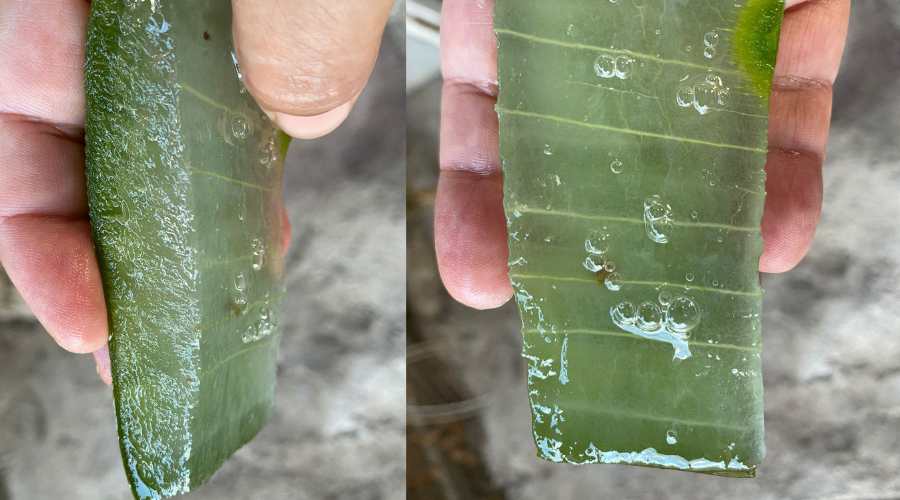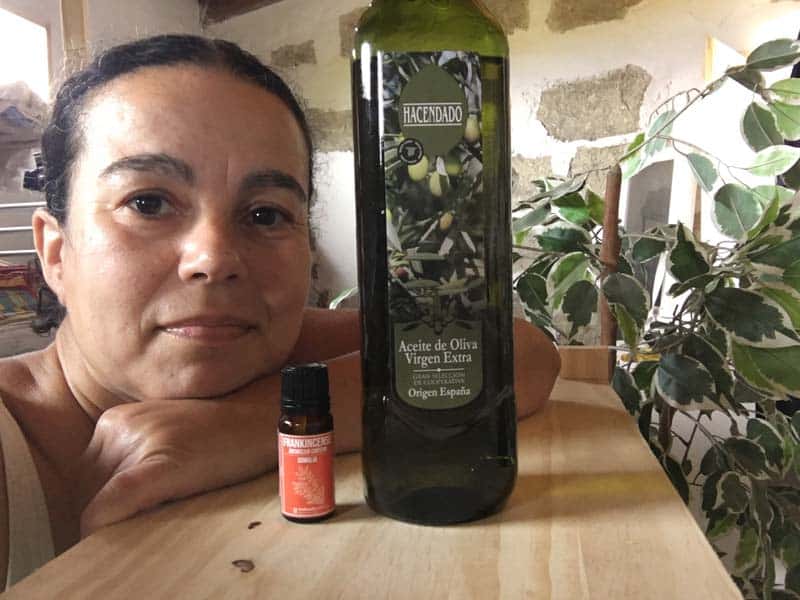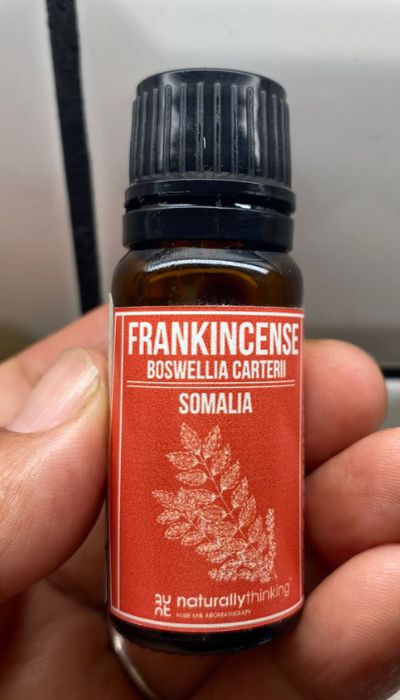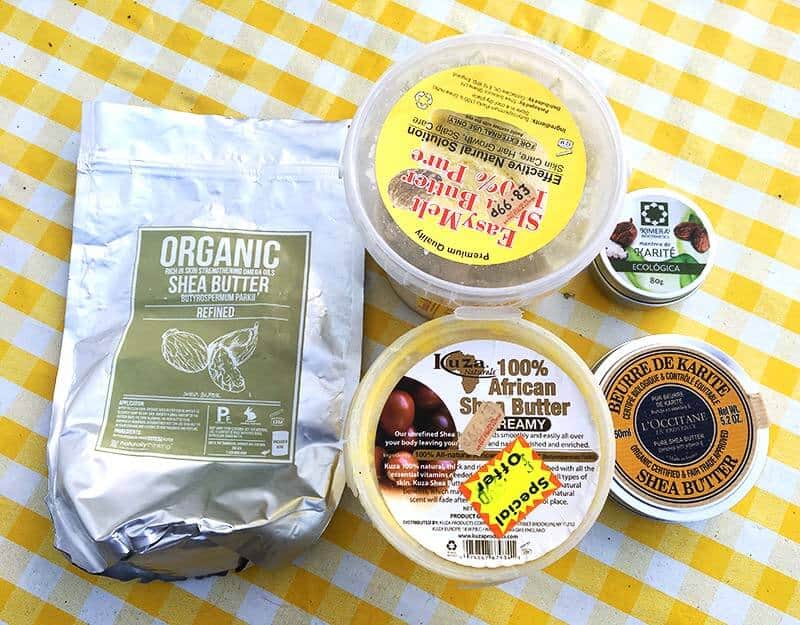5 Natural Skin Care Ingredients with Anti-Ageing Benefits to Transform Your Complexion in Just Weeks
Our skin is pretty amazing, but as we get older, though, it changes.
Wrinkles might start to show up a bit more, and the tone of our skin can become a little less even. It’s all part of the natural process, but there are ways to help keep our skin feeling its best.
I’ve been using natural ingredients since 2018 and my skin looks fantastic.
As a certified organic skincare formulator, my mission is to help you understand exactly what natural ingredients can do for your skin. I’m here to GUIDE YOU through the benefits of these powerful, nature-based solutions, so you can make informed choices that keep your skin healthy, radiant, and nourished.

And, trust me, they work. Much better at times that those expensive commercial skincare products full of unnecessary chemical ingredients.
UP to you to try the below, but I will recommend you at least read the content and make some notes. Perhaps you’ll feel inspired to get started at some point (I didn’t switch overnight, it takes years to fully embrace ONLY natural!). So don’t feel guilty and enjoy the content 🙂
Below, 5 of my favourites natural skincare “treatments”: aloe vera, green tea, olive oil, shea butter and rosehip oil.
Let’s get started!
Disclaimer: you will find affiliate links below. If you purchase through them I might earn a commission at no extra cost to you.
1. Aloe vera is gentle, soothing and PACKED with incredible benefits. My go to for sure.

Aloe vera is a fantastic addition to your skincare routine because it’s gentle, soothing, and full of benefits. Not only does it help calm irritated skin, but it’s also a great moisturiser, leaving your skin looking fresh and hydrated.
Why aloe vera works
Aloe vera is packed with water and nutrients that your skin loves, making it a top choice for hydration without feeling heavy. It’s light and absorbs easily into the skin, which is ideal for those who want moisture without the greasiness.
How to use aloe vera for skin
For best results, apply aloe vera in the morning as a base layer. It’s best to apply it after cleansing but before heavier moisturisers. This will allow it to soak into your skin and do its job, giving your face a healthy, hydrated glow. Always give it a few minutes to absorb before applying anything else on top.
Trapped oils and your skin
Throughout the day, oils can get trapped on the surface of the skin, sometimes leading to clogged pores or breakouts. Aloe vera helps balance the skin by keeping it moisturised without adding extra oils, making it great for those with oily or combination skin. When your skin is well-hydrated, it functions better at clearing out these impurities and maintaining a healthy balance of natural oils.
Building your routine
For beginners, start simple: cleanse, hydrate with aloe vera, and finish with a light moisturiser. As you get more comfortable, you can slowly add more targeted treatments like antioxidants or vitamin serums to enhance your skincare routine.
HERE’S MY RECOMMENDED ALOE VERA GEL.
5 Ways to use aloe vera in your skincare routine
👉 1. As a moisturiser: Every morning and evening, apply a thin layer of aloe vera gel to your face after cleansing. It hydrates without feeling heavy and absorbs quickly. Use daily for at least two weeks to see a noticeable improvement in hydration and smoothness.
👉 2. Soothe sunburn: Gently apply aloe vera gel to sunburnt areas as needed, 2-3 times a day, to cool and calm the skin until the redness and discomfort subside.
👉 3. Mix with your moisturiser: Every evening, add a small drop of aloe vera gel (around a pea-sized amount) to your usual moisturiser. This adds extra hydration without making the skin greasy. Use consistently for a few weeks for a noticeable boost in moisture levels.
👉 4. Spot treatment for blemishes: Apply a tiny dab of aloe vera gel directly to blemishes or irritated areas after cleansing, morning and night. Continue until the redness or irritation reduces, which usually happens within a few days.
👉 5. Use as a base for face masks: Once or twice a week, mix a tablespoon of aloe vera gel with other ingredients like honey or oatmeal. Apply the mixture to your face, leave it on for 15-20 minutes, then rinse with warm water for a soothing, hydrating mask.
HERE’S MY RECOMMENDED ALOE VERA GEL.
Keep in mind, skincare is personal, and what works for one person might not work for another, so it’s always a good idea to patch test new products and make small adjustments based on how your skin responds.
2. Green tea is PACKED with antioxidants that help protect and rejuvenate

Green tea is more than just a refreshing drink—it’s a wonderful ingredient for your skin, packed with antioxidants that help protect and rejuvenate. It’s a great ingredient for anyone looking to reduce redness, calm irritation, or give their skin a natural glow.
Why green tea works
Green tea is rich in polyphenols, particularly epigallocatechin gallate (EGCG), a powerful antioxidant that helps protect the skin from environmental damage. This can be especially useful in reducing signs of aging like fine lines and uneven skin tone. It also has anti-inflammatory properties, making it ideal for calming redness and soothing irritated skin.
How to use green tea for skincare
You can find green tea in a variety of skincare products, from toners to serums. To get the most out of it, try using a green tea toner after cleansing. This will help balance your skin, soothe any irritation, and prepare your skin for the next steps in your routine.
Alternatively, you can make your own DIY green tea toner by steeping a green tea bag in hot water (better if it is loose tea!), letting it cool, and applying it with a cotton pad. This is a gentle, refreshing way to add a boost of antioxidants to your skincare routine.
Great for oily and acne-prone skin
Green tea is particularly helpful for those with oily or acne-prone skin. Its antioxidant and anti-inflammatory properties can help reduce oil production, calm breakouts, and minimise the appearance of pores. Plus, it helps fight off bacteria that can lead to acne, giving your skin a clearer and healthier look.
Pair it with other ingredients…
For beginners, green tea works beautifully when combined with other natural ingredients. You can pair it with aloe vera for an ultra-soothing routine, or with hyaluronic acid for a deep hydration boost. Just be sure to avoid harsh ingredients that might counteract its calming benefits.
Gentle for sensitive skin
Because green tea is so gentle, it’s a great choice for those with sensitive skin. Its calming effects help soothe irritation and reduce redness, making it a go-to for those prone to rosacea or inflammation.
HERE’S MY RECOMMENDED GREEN TEA (LOOSE LEAF TEA).
5 Ways to use green tea in your routine
👉 1. As a toner: After cleansing, use green tea as a toner by soaking a cotton pad in cooled green tea and gently applying it to your face. Do this every morning and evening to help soothe and refresh your skin. Use for at least two weeks to notice reduced redness and a more even complexion.
👉 2. Soothe puffiness: Brew some loose green tea, strain it, and chill the tea in the fridge. Soak two cotton pads or cloths in the cooled tea, then place them over your eyes for 10-15 minutes. This helps reduce puffiness and brighten the under-eye area. Use daily or as needed for noticeable results within a week.
👉 3. In a face mist: Brew 1/2 cup of loose green tea, let it cool, and mix it with 1-2 tablespoons of rose water. Pour the mixture into a small spray bottle. Spritz it on your face throughout the day to keep your skin hydrated and refreshed. This mist is especially good for sensitive or irritated skin. Store it in the fridge, and it will last for up to 5 days. Use whenever your skin feels dry or needs a refresh.
👉 4. As a face mask: Mix 1-2 tablespoons of brewed and cooled green tea with some agave syrup or yoghurt for a soothing, antioxidant-rich face mask. Apply once or twice a week, leaving it on for 15 minutes before rinsing. Over time, this can help reduce inflammation and improve the skin’s natural glow.
👉 5. For oily skin: If you have oily skin, brew a strong cup of green tea, let it cool, and use it as a toner in the evening after cleansing. Its natural astringent properties help control excess oil. Apply daily and see improvements in oiliness within a week or two.
HERE’S MY RECOMMENDED GREEN TEA (LOOSE LEAF TEA).
Incorporating green tea into your routine is an easy and effective way to give your skin some extra love, especially if you’re looking for something gentle yet powerful.
3. Olive oil is PERFECT for mature skin, rich in vitamins, deeply nourishing!

Not many people realise that olive oil is a FANTASTIC ingredient for our skin. Rich in vitamins and healthy fats, it’s a deeply nourishing and moisturising ingredient that suits all skin types, especially dry or mature skin.
Why olive oil works
Olive oil is packed with vitamins A, D, E, and K, which all contribute to skin health. Its high content of fatty acids makes it a great moisturiser, helping to lock in hydration and strengthen the skin’s barrier. Plus, its antioxidant properties help fight free radicals, which can cause premature ageing.
How to use olive oil for skin
Olive oil can be used in a variety of ways in your skincare routine. For a simple and effective moisturiser, warm a few drops between your hands and massage it into your skin after cleansing. It’s excellent for deeply hydrating the skin, especially in dry areas like the elbows, knees, or heels.
If you’re looking for an extra boost of hydration, olive oil works well when applied before bed. You can gently press it into the skin, allowing it to soak in overnight, leaving your skin soft and smooth by morning.
Great for dry and mature skin
Because of its rich, moisturising properties, olive oil is particularly beneficial for people with dry or mature skin. It helps restore moisture levels, plump the skin, and smooth out the appearance of fine lines. If your skin is feeling extra dry, you can mix a few drops of olive oil into your regular moisturiser for added hydration.
A natural makeup remover
Olive oil also makes for a fantastic natural makeup remover. It breaks down makeup, dirt, and sunscreen without stripping the skin. Simply apply a small amount to your face, gently massage, and wipe away with a damp cloth. It leaves your skin clean and moisturised at the same time.
Patch test first
While olive oil is generally safe for most skin types, it’s always a good idea to patch test, especially if you have sensitive or acne-prone skin. Olive oil is quite rich, so those prone to clogged pores should use it sparingly and monitor how their skin reacts.
HERE’S MY RECOMMENDED OLIVE OIL FOR SKIN.
5 Ways to use olive oil in your skincare routine
👉 1. As a moisturiser: After cleansing, apply 2-3 drops of olive oil to your fingertips and gently massage it into your face, focusing on dry areas. Use this at night, as olive oil is quite rich, and allow it to absorb overnight. Apply daily for long-lasting hydration and softer skin.
👉 2. As a makeup remover: Pour 1 teaspoon of olive oil into your palm and massage it into your face to break down makeup. Use a warm, damp cloth to wipe it away. This works well even on waterproof makeup and can be used every evening.
👉 3. Mix with moisturiser: Add 1-2 drops of olive oil to your regular night moisturiser for extra hydration. Apply every evening, especially if your skin is feeling dry or tight.
👉 4. For dry patches: If you have areas like elbows or knees that need extra moisture, apply a few drops of olive oil (about 3-4 drops) and massage it into the skin. Use this as needed to keep those areas soft and smooth.
👉 5. As a cuticle oil: Apply 1 drop of olive oil to each cuticle and gently massage it in to soften and hydrate the skin around your nails. Do this every night for softer, healthier cuticles.
HERE’S MY RECOMMENDED OLIVE OIL FOR SKIN.
Incorporating olive oil into your skincare routine can help keep your skin feeling soft, nourished, and radiant, making it a simple yet powerful natural treatment.
4. Frankincense soothes the skin, reduces the appearance of fine lines & promotes an even complexion

If I had to choose an essential oil for skin, it would be frankincense essential oil.
This aromatic oil is especially popular in skincare for its ability to soothe the skin, reduce the appearance of fine lines, and promote a more even complexion.
Why frankincense essential oil works
Frankincense essential oil is known for its anti-inflammatory, antioxidant, and healing properties. It can help support the skin’s natural healing process, making it a great choice for those looking to reduce redness, irritation, or signs of aging. Its ability to boost collagen production makes it a popular anti-aging ingredient, helping to smooth fine lines and improve skin elasticity.
How to use essential oil for your skin
Frankincense essential oil is typically diluted in a carrier oil before being applied to the skin. Try mixing 1-2 drops of frankincense oil with a tablespoon of a carrier oil like jojoba or almond oil. Gently massage this blend into your skin after cleansing for a nourishing treatment that can help soothe and rejuvenate.
You can also add a few drops of frankincense to your regular moisturiser for an extra boost of hydration and healing benefits.
Great for mature and sensitive skin
Frankincense is especially beneficial for mature skin, as it helps reduce the appearance of wrinkles and fine lines while promoting a more youthful glow. Its calming properties make it suitable for sensitive skin as well, helping to reduce irritation and inflammation.
Helps even out skin tone
Another fantastic benefit of frankincense essential oil is its ability to even out skin tone. Whether you’re dealing with dark spots or just looking for a more radiant complexion, frankincense can help brighten and smooth the skin over time.
Relaxing aromatherapy benefits
Aside from its skincare perks, frankincense is also known for its calming and grounding scent. When used in your evening skincare routine, it can help you relax and unwind, making it a great choice for those looking to turn their routine into a calming ritual.
Always dilute and patch test
As with any essential oil, it’s important to dilute frankincense before applying it to your skin. A patch test is always a good idea, especially if you have sensitive skin, to ensure there’s no irritation.
MY RECOMMENDED FRANKINCENSE ESSENTIAL OIL FOR SKIN.
4 Ways to use frankincense essential oil in your skincare routine
👉 1. As a facial oil: Mix 1-2 drops of frankincense essential oil with 1 tablespoon of a carrier oil, like jojoba or almond oil. Gently massage the blend into your skin after cleansing. Apply this every evening for smoother skin and to help reduce the appearance of fine lines over time. Avoid applying essential oils undiluted directly to the skin.
👉 2. In your moisturiser: Add 1 drop of frankincense oil to your regular night moisturiser and mix well before applying. This adds a rejuvenating boost, especially for mature skin. Use this mixture nightly for visible improvements within a few weeks.
👉 3. Spot treatment: For blemishes or irritated areas, mix 1 drop of frankincense essential oil with 1 teaspoon of a carrier oil. Dab the blend gently onto the affected areas with a cotton swab, morning and night, until the redness or irritation calms down.
👉 4. In a face mask: Add 1-2 drops of frankincense oil to a homemade mask mixture (such as agave syrup or aloe vera) for an extra healing and soothing boost. Use this once a week and leave it on for 15-20 minutes before rinsing off.
MY RECOMMENDED FRANKINCENSE ESSENTIAL OIL FOR SKIN.
Adding frankincense essential oil to your routine can give your skin a natural lift, promoting a smoother, brighter, and more balanced complexion.
5. Shea butter: the epitome of skin barrier protection


Shea butter is my go-to for a rich, creamy ingredient that does wonders for the skin! It’s a deeply nourishing butter, full of vitamins and fatty acids, that can help soften, smooth, and protect your skin. Whether you’re dealing with dryness, irritation, or just want a natural moisturiser, shea butter is a fantastic choice. I’ve written so much about it I can’t keep up with the posts to be honest. Here you can take a look at other articles on shea butter.
Why it works
Shea butter is packed with vitamins A and E, both of which are great for skin health. It’s also loaded with fatty acids that help lock in moisture, making it perfect for keeping skin soft and hydrated. These nutrients work together to soothe irritation, improve skin texture, and support the skin’s barrier, preventing moisture loss.
How to use it
Shea butter can be used on its own or mixed into other products for a customised skincare routine. It’s best applied after a shower when your skin is still damp, helping to seal in moisture. Just scoop a small amount, warm it up in your hands, and massage it into your skin.
For those with very dry areas, like elbows, knees, or feet, shea butter provides intense hydration. You can also use it as a lip balm to soothe and protect chapped lips.
Great for dry and sensitive skin
Shea butter is incredibly gentle, making it perfect for dry and sensitive skin types. It helps calm irritation, reduce redness, and provides a protective layer to prevent further dryness. If your skin feels tight or flaky, shea butter is a great natural remedy to bring back softness and comfort.
Supports healing
One of the amazing properties of shea butter is its ability to promote healing. Whether you have minor irritations, cracked skin, or even stretch marks, shea butter can help speed up the skin’s recovery process, leaving it smooth and hydrated.
Non-comedogenic
Although shea butter is rich and nourishing, it’s non-comedogenic, meaning it won’t clog pores. This makes it suitable for all skin types, even those prone to breakouts. It helps balance moisture levels without adding excess oil, which can be a plus for people with combination skin.
Perfect for homemade skincare
Shea butter is also a favourite in DIY skincare products. It’s often used as a base in homemade lotions, body butters, and lip balms because of its natural moisturising properties. You can combine it with essential oils or other natural ingredients to create your own custom skincare blends.
MY RECOMMENDED SHEA BUTTER (UNREFINED, ORGANIC, PURE).
5 Ways to use shea butter in your skincare routine
👉 1. As a daily moisturiser (for dry or very dry skin): After a shower, while your skin is still slightly damp, scoop out a small amount of shea butter (about the size of a pea for your face, or a teaspoon for larger areas like arms or legs) and massage it into your skin. Use this once or twice daily to deeply hydrate and soften dry skin.
👉 2. For very dry areas: Apply a generous amount (about a teaspoon) of shea butter to dry areas like elbows, knees, or heels. Massage it in until absorbed. Do this daily, and within a week or two, you should notice softer, more hydrated skin.
👉 3. Lip balm: Apply a small amount of shea butter (about the size of a grain of rice) directly to your lips for instant hydration. Use it as often as needed to keep your lips soft and smooth.
👉 4. As a hand cream (GREAT in the winter): Rub a pea-sized amount of shea butter into your hands and cuticles, especially before bed, to help lock in moisture and soften rough skin. Use daily for long-lasting hydration.
👉 5. For hair treatment: Warm up a small amount of shea butter (about a teaspoon) between your hands and apply it to the ends of your hair to prevent split ends and boost moisture. Use once or twice a week for best results.
MY RECOMMENDED SHEA BUTTER (UNREFINED, ORGANIC, PURE).
Whether you’re looking to deeply moisturise your skin, calm irritation, or simply keep it feeling soft and smooth, shea butter is a versatile, natural option that suits a variety of skin needs.
The above 5 natural treatments can improve your complexion in just weeks if you’re consistent!
Incorporating natural ingredients like aloe vera, green tea, olive oil, frankincense essential oil, and shea butter into your skincare routine can truly transform the way your skin feels and looks, trust me.
Each of these powerful, nature-derived ingredients brings its own unique benefits—whether it’s soothing irritation, providing deep hydration, or promoting a more youthful, glowing complexion.
Natural skincare is about simplicity, nourishment, and letting your skin thrive without the need for harsh chemicals.
By using these ingredients, you’re not only treating your skin with kindness but also tapping into centuries of wisdom and tradition.
Whether you’re just starting out or looking to refine your routine, these natural “treatments” can help you achieve healthier, more radiant skin.
